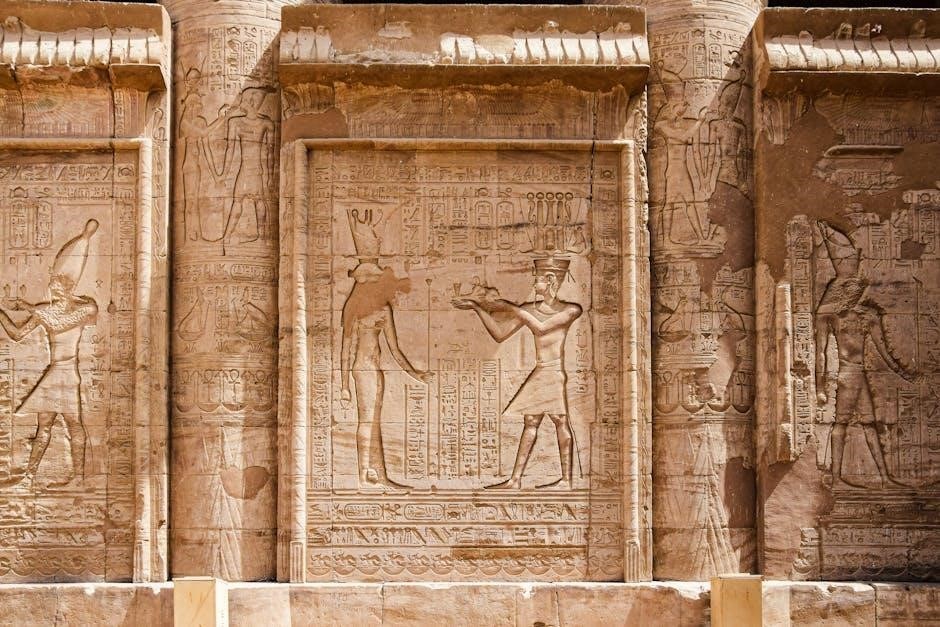Planning a celebration of life is a meaningful way to honor your loved one, providing comfort and closure for family and friends. It allows personalization, creating a unique tribute that reflects their personality, achievements, and legacy. This guide offers step-by-step support to help you navigate the process with ease and compassion.

1.1 Understanding the Importance of a Celebration of Life
A celebration of life is a meaningful way to honor a loved one, providing comfort and closure for family and friends. It allows for personalization, reflecting the individual’s personality, achievements, and legacy. This event helps in the grieving process by creating a space for shared memories and emotions. Unlike traditional funerals, it focuses on celebrating the person’s life, offering a positive and uplifting experience. Personal touches, such as decorations, music, and storytelling, make it a unique tribute. It also helps alleviate the stress of planning during a difficult time by offering a structured yet flexible approach to commemorating their life. This guide ensures the celebration is both memorable and meaningful.

Key Steps in Planning a Celebration of Life
Planning involves setting a budget, choosing a date, selecting a venue, finding a celebrant, designating an emcee, and personalizing the event to honor your loved one.
2.1 Setting a Budget
Setting a budget is crucial to ensure the celebration of life is meaningful without financial strain. Determine overall costs, including venue, decorations, catering, and officiant fees. Allocate funds based on priorities, such as music, flowers, or personalized elements. Consider optional expenses like memory books or live streaming for remote guests. Start with a realistic figure and adjust as needed. openly discuss financial contributions with family to avoid overspending. A clear budget helps maintain focus on honoring your loved one while managing expenses effectively. Remember, the goal is to celebrate their life thoughtfully, not extravagantly. Consulting a professional planner can also provide cost-saving ideas tailored to your needs.

2.2 Choosing a Date and Time

Choosing a date and time for the celebration of life is essential to ensure maximum attendance and convenience for family and friends. Consider factors such as work schedules, travel availability, and weather, especially for outdoor events. Aim for a date that allows enough time for preparations but is not too distant, as emotions may shift. Weekends or evenings are often preferred to accommodate those with weekday commitments. Additionally, avoid scheduling during holidays or significant family dates that may conflict. Once a date is set, communicate it clearly to all guests and consider sending reminders. Be flexible to accommodate key participants, such as officiants or speakers, ensuring their availability aligns with your chosen time. This thoughtful planning helps create a meaningful and inclusive experience for everyone involved.

2.3 Selecting a Venue
Selecting the right venue for a celebration of life is crucial to create a fitting atmosphere for honoring your loved one. Consider the number of guests, accessibility, and parking availability when choosing a location. Options include funeral homes, churches, outdoor spaces, or personal residences, depending on the desired setting. Ensure the venue aligns with the personality and preferences of the deceased, whether formal, casual, or scenic. Practical factors like seating capacity, restrooms, and audiovisual equipment are also important. Personalize the space with meaningful decorations or mementos to reflect their life and legacy. Visiting the venue beforehand can help confirm its suitability and allow time for any necessary adjustments. The venue should provide comfort and facilitate meaningful connections among attendees.

2.4 Finding a Celebrant or Officiant
Finding the right celebrant or officiant is essential to ensure the celebration of life reflects the personality and spirit of your loved one. A celebrant can be a religious leader, a professional officiant, or even a trusted friend or family member capable of leading the service meaningfully. They should be able to create a personalized ceremony that honors the deceased’s life story, values, and beliefs. Consider reaching out to local funeral homes, churches, or secular organizations for recommendations. Discuss the tone and style of the service with the celebrant to align it with your vision. Their role is to guide the proceedings with compassion, ensuring the event is both heartfelt and memorable, bringing comfort to all attendees.
2.5 Designating an Emcee
Designating an emcee is a crucial step in ensuring the celebration of life runs smoothly and remains focused on honoring your loved one. The emcee should be someone close to the family or deceased, or a professional with experience in leading events. They should be comfortable speaking publicly, organized, and able to maintain the right tone throughout the service. The emcee will introduce speakers, guide the flow of the ceremony, and keep the event on schedule. Provide them with a detailed outline of the program, including the order of events, speaker names, and any special requests. This ensures the celebration remains respectful, heartfelt, and true to the legacy of the person being honored. Their role is to create a seamless experience for all attendees, allowing everyone to focus on celebrating the life being remembered.
Personalizing the Celebration
Personalizing the celebration involves incorporating meaningful elements like decorations, music, and personal items that reflect the individual’s life and personality, creating a heartfelt tribute.
3.1 Creating a Memory Book or Guest Book
Creating a memory book or guest book is a heartfelt way to honor your loved one and capture the emotions of those attending the celebration. You can include pictures, stories, and personal items that reflect their life and personality. Guests can write notes, share memories, or sign their names, making it a meaningful keepsake for the family. This book serves as a lasting tribute and provides comfort as it becomes a cherished family heirloom. It also allows everyone to feel involved in celebrating the life of the deceased, creating a sense of community and shared remembrance.
3.2 Incorporating Decorations and Mementos
Incorporating decorations and mementos into the celebration of life creates a meaningful and personalized atmosphere. Consider using flowers, candles, or memory posters with pictures from the person’s life to greet guests. Displaying personal items, such as favorite clothes, hobbies, or achievements, adds a touching tribute. These elements reflect the individual’s personality and legacy, making the event more intimate and memorable. Mementos can also serve as conversation starters, allowing attendees to share stories and connect over shared memories. By thoughtfully selecting decorations, you honor the loved one and provide comfort to those gathered, creating a space that feels both celebratory and reflective of their life.

Cultural and Religious Considerations
Honoring cultural and religious traditions is vital in a celebration of life, ensuring the event reflects the individual’s beliefs and heritage. Incorporate meaningful rituals, music, or readings to create a respectful and authentic tribute that resonates with all attendees.
4.1 Honouring Traditions and Beliefs
Honouring cultural and religious traditions is essential for creating an authentic and meaningful celebration of life. Incorporate rituals, music, or readings that reflect the individual’s heritage or faith, ensuring the event feels personal and respectful. Many traditions include specific ceremonies or symbols that hold deep significance, such as candle-lighting, prayers, or communal singing. Involve religious or cultural leaders to guide these elements, ensuring they align with the family’s wishes. Respecting these customs provides comfort to loved ones and ensures the celebration remains true to the person’s beliefs. Personalizing the event with cultural practices or symbols can also create a deeper connection for attendees, making the tribute both heartfelt and memorable.
Execution and Final Touches
Ensure all details are in place, confirm timings, and coordinate logistics for a seamless event. Finalize setups, confirm participant roles, and prepare for a meaningful tribute.

5.1 Final Checklist for the Day of the Celebration
Ensure all arrangements are confirmed and ready for the celebration. Verify the venue setup, seating, and decorations. Confirm the officiant, emcee, and participant roles. Prepare and distribute programs or agendas. Set up memory books, guest books, or designated areas for tributes. Arrange for necessary equipment, such as microphones or AV systems, and test them beforehand. Coordinate catering and refreshments, if applicable. Prepare a backup plan for unexpected weather changes or technical issues. Assign someone to manage the flow of events and handle last-minute tasks. Ensure all personal items, photos, and mementos are in place. Confirm transportation and accommodations for out-of-town guests. Have a plan for collecting donations or handling condolences. Finally, take a moment to review everything to ensure a smooth and meaningful celebration.

























































